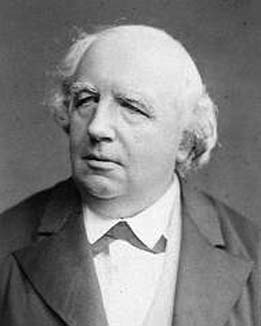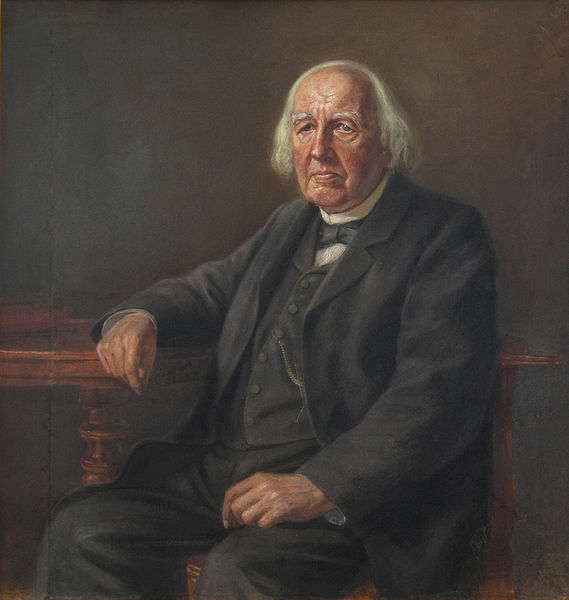<Back to Index>
- Mathematician Karl Theodor Wilhelm Weierstrass, 1815
- Painter Johannes Vermeer, 1632
- Chairman of the Nationalist Government of China Chiang Kai-shek, 1887
PAGE SPONSOR


Karl Theodor Wilhelm Weierstrass (Weierstraß) (October 31, 1815 – February 19, 1897) was a German mathematician who is often cited as the "father of modern analysis".
Weierstrass was born in Ostenfelde, part of Ennigerloh, Province of Westphalia. He was the son of Wilhelm Weierstrass, a government official, and Theodora Vonderforst. His interest in mathematics began while he was a Gymnasium student. He was sent to the University of Bonn upon graduation to prepare for a government position. Because his studies were to be in the fields of law, economics, and finance, he was immediately in conflict with his hopes to study mathematics. He resolved the conflict by paying little heed to his planned course of study, but continued private study in mathematics. The outcome was to leave the university without a degree. After that he studied mathematics at the Academy in Münster and his father was able to obtain a place for him in a teacher training school in Münster. Later he was certified as a teacher in that city. During this period of study, Weierstrass attended the lectures of Christoph Gudermann and became interested in elliptic functions.
After
1850 Weierstrass suffered from a long period of illness, but was able
to publish papers that brought him fame and distinction. He took a
chair at the Technical University of Berlin, then known as the Gewerbeinstitut. He was immobile for the last three years of his life, and died in Berlin from pneumonia. Weierstrass was interested in the soundness of
calculus. At the time, there were somewhat ambiguous definitions
regarding the foundations of calculus, and hence important theorems
could not be proven with sufficient rigour. While Bolzano had developed a reasonably rigorous definition of a limit as
early as 1817 (and possibly even earlier) his work remained unknown to
most of the mathematical community until years later, and many had only
vague definitions of limits and continuity of functions. Cauchy gave a form of the (ε, δ)-definition of limit, in the context of formally defining the derivative, in the 1820s, but
did not correctly distinguish between continuity at a point versus
uniform continuity on an interval, due to insufficient rigor. Notably,
in his 1821Cours d'analyse, Cauchy
gave a famously incorrect proof that the (pointwise) limit of
(pointwise) continuous functions was itself (pointwise) continuous. The
correct statement is rather that the uniform limit of uniformly continuous functions is uniformly continuous. This required the concept of uniform convergence, which was first observed by Weierstrass's advisor, Christoph Gudermann,
in an 1838 paper, where Gudermann noted the phenomenon but did not
define it or elaborate on it. Weierstrass saw the importance of the
concept, and both formalized it and applied it widely throughout the
foundations of calculus. The (ε, δ)-definition of limit, as formulated by Weierstrass, is as follows: Using
this definition and the concept of uniform convergence, Weierstrass was
able to write proofs of several then-unproven theorems such as the intermediate value theorem (for which Bolzano had given an insufficiently rigorous proof), the Bolzano-Weierstrass theorem, and Heine-Borel theorem.
Weierstrass also made significant advancements in the field of calculus of variations.
Using the apparatus of analysis that he helped to develop, Weierstrass
was able to give a complete reformulation of the theory which gave way
for the modern study of calculus of variations. Among several
significant results, Weierstrass established a necessary condition for
the existence of strong extrema of variational problems. He also helped devise the Weierstrass–Erdmann condition which gives sufficient conditions for an extremal to have a corner.
 is continuous at
is continuous at  if for every
if for every  such that
such that